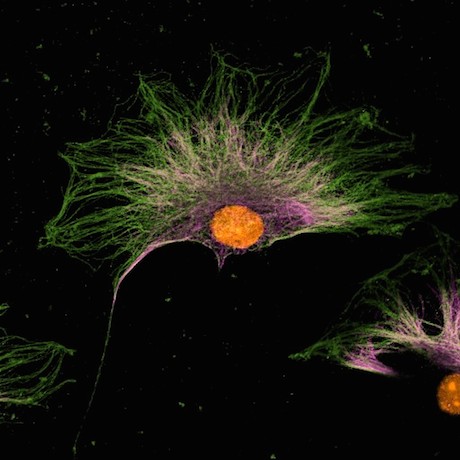This image submitted by Thalita Abrahao won second place at the Postdoctoral Research Symposium Thursday. Abrahao, a postdoc in Kathy Griendling’s lab, is studying vesicle trafficking in vascular smooth muscle cells.
Griendling’s lab has been looking into how the enzyme Nox4 and its partner Poldip2 are involved in cell migration, and Abrahao was investigating if vascular smooth muscle cells that have less Poldip2 have changes in protein processing.
Here, green represents beta-tubulin, a protein making up fine-looking fibers (microtubules) extending through the cell. Purple represents Sec23, part of the process of vesicle trafficking and protein secretion. White indicates when beta-tubulin and Sec23 are both present. Orange marks DNA in the nucleus.





